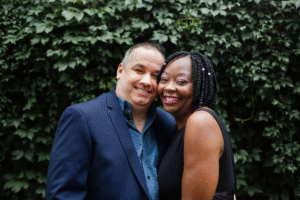The Blueprint for Resolving Conflict
Using the 4S’s of Secure Attachment
The Secure Attachment Blueprint for Resolving Conflict
This Builds Stronger RelationshipsThe Secure Attachment Blueprint for Resolving Conflict

The Secure Attachment Blueprint for Resolving Conflict
The 4 S’s of Secure Attachment and How Can Help Build Stronger Relationships
The Blueprint for Resolving Conflict
Using the 4 S’s of secure attachment involves creating a safe, empathetic, and supportive environment where both parties feel heard and valued. Here’s a blueprint for applying the 4 S’s to navigate and resolve conflicts effectively:
1. Safe: Create a Safe Space
- What it means: Ensure that both individuals feel emotionally and physically safe to express themselves without fear of judgment, criticism, or retaliation.
- How to apply:
- Approach the conflict calmly and avoid raising your voice or using harsh language.
- Set boundaries for respectful communication (e.g., no name-calling or interrupting).
- Take a break if emotions escalate, but commit to revisiting the conversation when both are calmer.
- Reassure the other person that the goal is to resolve the issue, not to “win” or assign blame.
2. Seen: Acknowledge and Validate
- What it means: Make sure both parties feel understood and that their emotions and perspectives are recognized.
- How to apply:
- Practice active listening: Give your full attention, maintain eye contact, and avoid interrupting.
- Reflect back what you hear: “I hear that you’re feeling frustrated because…”
- Validate their feelings, even if you don’t fully agree: “It makes sense that you feel that way given the situation.”
- Avoid dismissing or minimizing their emotions (e.g., “You’re overreacting”).
3. Soothed: Offer Comfort and Reassurance
- What it means: Help each other feel emotionally regulated and supported during the conflict.
- How to apply:
- Use a calm and gentle tone to de-escalate tension.
- Offer physical reassurance if appropriate (e.g., a hand on their shoulder or a hug).
- Reassure them of your commitment to the relationship: “I care about you, and I want us to work through this together.”
- If emotions are running high, suggest a pause to cool down and return to the discussion when both are more composed.
4. Secure: Build Trust and Resolution
- What it means: Foster a sense of stability and trust by working collaboratively toward a resolution and reinforcing the relationship’s strength.
- How to apply:
- Focus on finding solutions rather than assigning blame.
- Use “we” language to emphasize teamwork: “How can we move forward from this?”
- Reaffirm your commitment to the relationship: “We’ve faced challenges before, and I know we can get through this.”
- After resolving the conflict, reflect on what you both learned and how you can handle similar situations better in the future.
Example in Action:
Imagine a couple arguing about one partner feeling neglected due to the other’s busy work schedule:
- Safe: The busy partner reassures, “I’m not upset with you, and I want to understand how you’re feeling.”
- Seen: They listen actively and say, “I hear that you’re feeling lonely and unimportant because I’ve been so focused on work.”
- Soothed: They offer comfort: “I’m sorry you’ve been feeling this way. I care about you deeply, and I want to make this right.”
- Secure: Together, they brainstorm solutions, like scheduling regular date nights, and reaffirm their commitment: “You’re my priority, and I’ll make sure my actions show that.”

The “4 S’s of Secure Attachment” is a concept developed by Dr. Dan Siegel and Dr. Tina Payne Bryson, primarily in the context of parenting and child development. However, these principles can also be applied to adult relationships, including romantic partnerships, friendships, and other close connections.
The 4 S’s are:
Safe: Feeling physically and emotionally safe in a relationship is foundational. This means being free from harm, judgment, or criticism and knowing that the other person will not intentionally hurt or betray you. Safety fosters trust and allows vulnerability.
Seen: Feeling seen means being understood and valued for who you truly are. It involves the other person paying attention to your emotions, needs, and experiences, and validating them. This creates a sense of being deeply known and accepted.
Soothed: In a secure relationship, you feel comforted and supported during times of distress. The other person is responsive to your needs, offering empathy, reassurance, and care when you’re struggling, which helps regulate emotions and build resilience.
Secure: When the first three S’s are consistently met, a sense of security develops. This means you can trust the relationship, feel confident in its stability, and know that the other person will be there for you, even during challenges.
These principles are essential for fostering healthy, secure attachments in adult relationships, promoting emotional intimacy, trust, and mutual support.
By consistently applying the 4 S’s in your relationships, the blueprint for resolving conflict can become opportunities to strengthen the relationship and deepen emotional intimacy.
Find us on Marriage.com
